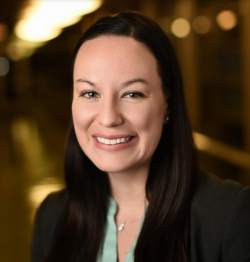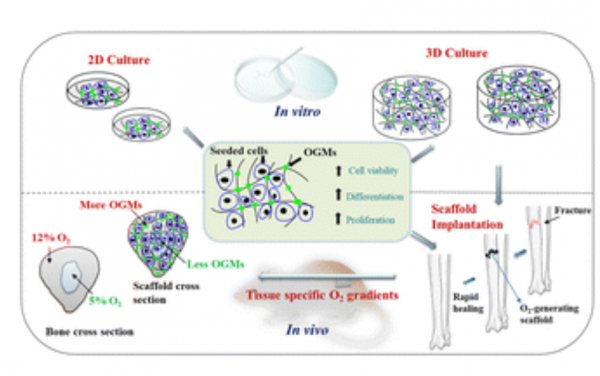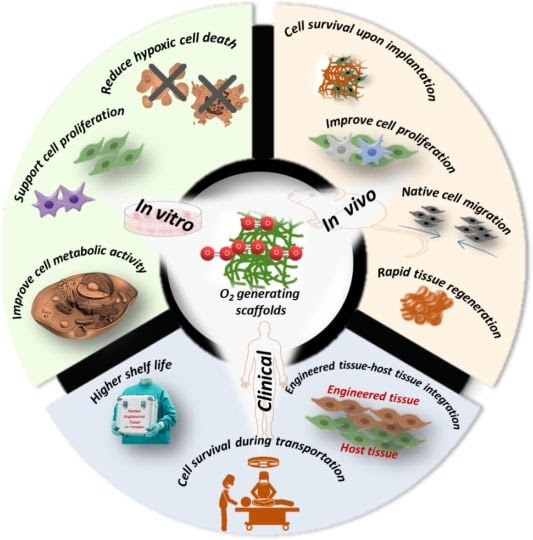Society For Biomaterials - Tissue Engineering SIG Newsletter [Spring 2023]

Welcome to our Spring Quarterly Newsletter! We encourage our SIG members to attend the upcoming Society For Biomaterials annual meeting in San Diego (April 19-22). Registration is still open! Please support your fellow SIG members by attending our SIG-sponsored sessions:
- Biomaterials for Regenerative Engineering
- Development of Novel Bioinks for Tissue Engineering
- Tissue Engineering SIG
Additionally, we will be holding our virtual SIG meeting on Tues May 2nd at 10am PDT (1pm EST). Please mark your calendars so that we can discuss SIG leadership nominations as well as initiate planning for the 2024 meeting.
Link: https://stanford.zoom.us/j/99647673191?pwd=eXh6U3ZzZHlEMVlrTCttVXVQZTVqQT09
Meeting ID: 996 4767 3191 Password: 081372
Finally, SFB is soliciting officer nominations for our SIG. To nominate yourself or a colleague, please complete the following form, including a brief biography and a paragraph on your vision for the SIG: Submit Your Nomination HERE! Don't miss out on this great leadership opportunity within the Society! The deadline for SIG Officer Nominations is Monday, May 1, 2023.
SIG Member Spotlight

Assistant Professor of Biomedical Engineering at Oregon Health & Science University
Spotlight on Dr. Carolyn Schutt Ibsen, PhD!
What are the biggest benefits of ultrasound-mediated wirelessly-controlled biomaterials for tissue engineering? My lab is focused on developing energy-responsive biomaterial systems for in vitro disease modeling and regenerative medicine, with a particular interest in materials that can be remotely-controlled using ultrasound waves. Ultrasound is an especially exciting trigger for stimuli-responsive biomaterials as it can be focused to tight spots at significant depths within tissue or tissue-engineered constructs to manipulate cells deep within. By designing responsive 3D scaffolds, the ultrasound waves can be used to stimulate release of bioactive proteins or to genetically perturb select cells with spatiotemporal control. One of the biggest benefits of this new technology is that it allows us to build multicellular tissue-like structures, let the cells self-organize, and then noninvasively trigger different biological or pathological processes at defined timepoints. These 3D-programmable biomaterials have utility both as in vitro disease models and for remotely controlling tissue repair processes in implanted biomaterials for clinical use.
Your biography on your lab site notes the importance of fostering diversity, equity, and inclusion in lab culture. Can you expand on the importance of this? We are committed to building a lab culture where all members feel included, supported, and respected. As a faculty member and mentor, it is my personal responsibility to be proactive in increasing the representation of historically excluded individuals in science and engineering and to help build a community that supports their success. A diverse and inclusive research community is essential for innovating research ideas from a wide range of perspectives and for interrupting biases, leading to technologies and biomaterials solutions that benefit everyone.
What made you decide to stay in academia over going to industry? I truly enjoy working with students and postdoctoral scholars and the energy and creativity that they bring to our research team! I consider it a great privilege to mentor their journey in biomaterials and biomedical engineering. I also have the freedom to explore new ideas that I am passionate about and collaborate with experts to innovate interdisciplinary solutions to healthcare challenges.
Where do you see your field in the next 10 years? There are many exciting new developments in stimuli-responsive biomaterials that can afford us new ways to control material response and cellular behavior on-demand. I expect these materials will be leveraged for precision medicine with the ability to spatiotemporally tailor therapeutic release or cell state changes to meet a particular patient's needs, leading to new interventional strategies and clinical trials. These biomaterials are also poised to advance in vitro models of patient tissues by mimicking spatiotemporal patterns of disease progression and predicting responses to particular drugs or stressors.
If you could go back in time, what is one piece of advice you’d give yourself as a trainee? Ask lots of questions and get feedback on your ideas early and often! Sometimes the answer or an exciting new idea is just a conversation away and it's important to facilitate this process. Cultivate a group of colleagues and friends with backgrounds different from your own that are generous with their knowledge and honest with their feedback. These people are invaluable colleagues and bouncing ideas off each other can be one of the greatest joys of research.
News from Our SIG

Source: van Zyl et al., Biomater Adv, 148, 213345 (2023)
New Publication: "Structural properties of optically clear bacterial cellulose produced by Komagataeibacter hansenii using arabitol" in Biomater Adv (2023) by van Zyl et al. (Click here to read!)
Dr. Coburn and colleagues developed a method to generate optically transparent bacterial cellulose and characterize the fundamental material properties including chemical, structural, and water absorption. These new material is subject to continued investigation for wound dressing applications.

Source: Nikolopoulos et al., Biomater. Sci., 2023,11, 1567-1588
New Publication: "Harnessing the potential of oxygen-generating materials and their utilization in organ-specific delivery of oxygen" in Biomaterials Science (2023) by Nikolopoulos et al. (Click here to read!)
Dr. Camci-Unal and colleagues reviewed the tissue-specific distribution of oxygen in different organs. They also discussed the need to mimic oxygen distribution in tissue engineered constructs and the attempts to provide a sustained supply of oxygen in different types of engineered tissues.

Source: Augustine et al., Chemical Engineering Journal, Volume 455, Part 2, 2023, 140783
New Publication: "Oxygen-generating scaffolds: One step closer to the clinical translation of tissue engineering products" in Chemical Engineering Journal (2023) by Augustine et al. (Click here to read!)
Dr. Camci-Unal and colleagues discussed the recent advances in the use of oxygen-generating biomaterials in various tissue engineering approaches such as in ex vivo tissue engineering, in situ tissue engineering, and 3D bioprinting. In addition, they covered the challenges and opportunities.
NSF Career Award to Dr. Jeannine Coburn: Dr. Coburn was awarded an NSF CAREER Award for her proposal ‘Development of Optically Transparent Bacterial-Derived Hybrid-Cellulose Biomaterials with Antimicrobial Properties for Wound Treatment’. Check out the WPI press release here and the NSF award information here. Dr. Coburn was also recently awarded tenure and promoted to associate professor in the Department of Biomedical Engineering at Worcester Polytechnic Institute.
Veterans Affairs Research Career Scientist Award to Dr. Ngan Huang: Dr. Ngan Huang receives Veterans Affairs Research Career Scientist award to fund her research in peripheral arterial disease and traumatic muscle injury. This award is given to established independent investigators who have demonstrated significant scientific achievements to VA research programs. Dr. Huang's Cardiovascular Tissue Engineering Laboratory at the Stanford School of Medicine focuses on stem cell-ECM microenvironment interactions for the treatment of cardiovascular and musculoskeletal diseases. Read more information here.
First Place to Suh Hee Cook in Graduate Research Symposium: Suh Hee Cook, PhD candidate in Dr. Jessica Gluck's lab at NC State, won first place in Engineering in a poster competition of 182 students from across all colleges at the university for her project "In Vitro Stimulation-Conduction Platforms to Mature Induced Pluripotent Stem Cell-Derived Cardiomyocytes."
Help Wanted!
Seeking speakers for NCSU’s Virtual Tissue Engineering Seminar. Please email Dr. Jessica Gluck at jmgluck@ncsu.edu if interested.
Submit your news for the upcoming Tissue Engineering SIG newsletter here! News can include publications, fellowships, job postings, events, conferences, calls for abstracts, calls for collaboration, awards, or anything exciting going on in your lab/institution/etc.
From your Tissue Engineering SIG Leadership,
Ngan F. Huang, Chair (ngantina@stanford.edu)
Jeannine Coburn, Vice Chair (jmcoburn@wpi.edu)
Qun Wang, Secretary/Treasurer (qunwang@iastate.edu)
Gulden Camci-Unal, Program Chair (Gulden_CamciUnal@uml.edu)
Newsletter designed by Suh Hee Cook